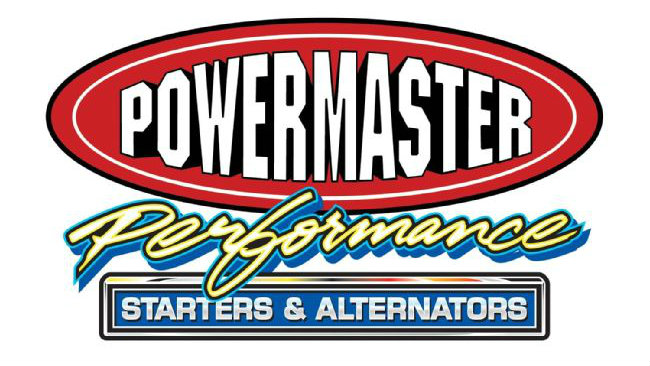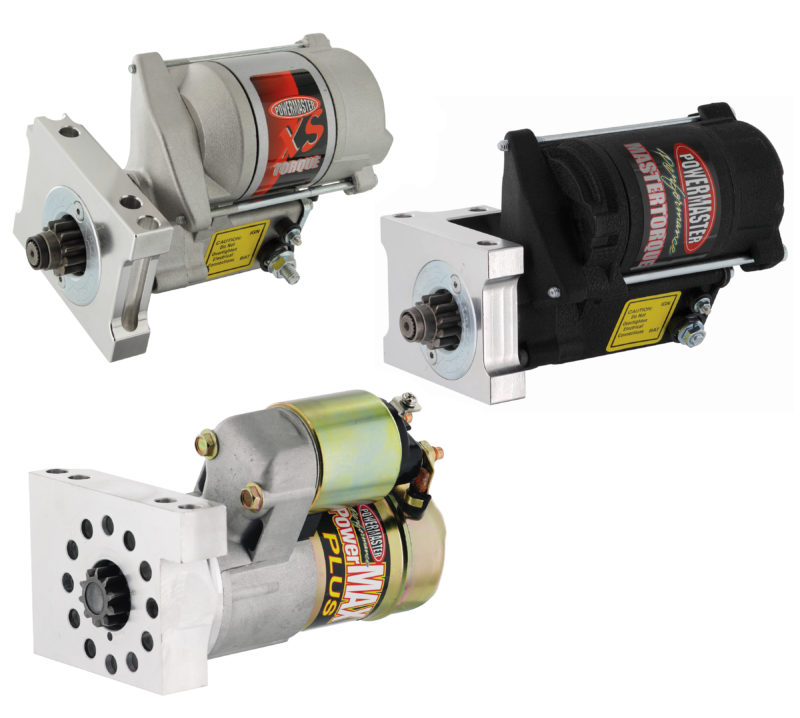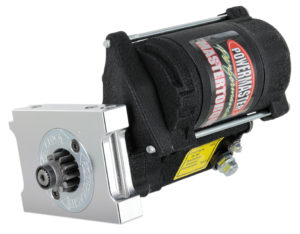The starter bolted underneath your engine performs an amazing feat time and time again. The act of spinning an engine over is quite difficult when you stop and think about it. Consider that a starter has to get the entire rotating assembly, we're talking the crankshaft, flywheels, the accessory drive and of course all of thos pistons, spinning and churning - that's a lot of weight! Powermaster Performance has been designing and manufacturing starters for over 25 years and have learned a thing or two about selecting and installing a new starter.
One of the biggest things is of course what will fit your application? Do you have a modified suspension or exhaust system that will affect the starter mounting position? If it is tight confines, a more compact gear reduction starter will be necessary. Besides the smaller size being a bonus, gear reduction starters are generally lighter plus they provide increased torque over standard starter motors.
If headers or an oil pan kickout are a part of your driveline, you may want to consider a starter that provides a way to clock the motor to a different location around the starter block. Powermaster offers starters that allow the position of the mounting block to be adjusted to help provide the clearance required for installation including their Infi-Clock option which provides up to 360-degrees of mounting rotation.
Another item to consider is the torque output of the starter. Though you can’t really have too much torque, Powermaster recommends a rating of at least 160 lb-ft for engines under 10.5:1 compression, 180 lb-ft for up to 12:1 and for anything over that, go with a 200 lb-ft rating – Powermaster even offers their Ultra Torque series that produces up to 250 lb-ft.
Several more useful starter installation tips from Powermaster include:
- Ensure the mounting pad is free of paint to achieve a quality ground path.
- On engines with vertical bolts that go into the engine block, always use the supplied knurled section that ensures there will be no movement when the starter is cranking. Without that knurled area, over time the starter will move, ever so slightly, but enough to eventually cause damage to the pinion gear and/or the ring gear.
- Consider updating the battery cable. Performance starters require more current than a stock model and in many cases the factory wiring may not efficiently carry the high load.
- Run a ground cable from the engine block to chassis or battery ground.
- Check gear mesh. Gear mesh is the relationship of the ring gear and the pinion gear teeth. There should be .020-.035 of area (the size of a paperclip) between the gear teeth when engaged. If the clearance is too tight, shims can easily be added between the engine block and starter mounting block.
- Check pinion depth. This is the distance that the pinion gear teeth engage with the ring gear. A rule of thumb is for the pinion gear to be about ½ -2/3 engaged with the ring gear. Powermaster supplies shims that go behind the mounting block of the starter to achieve the proper gear depth.
www.powermasterperformance.com




